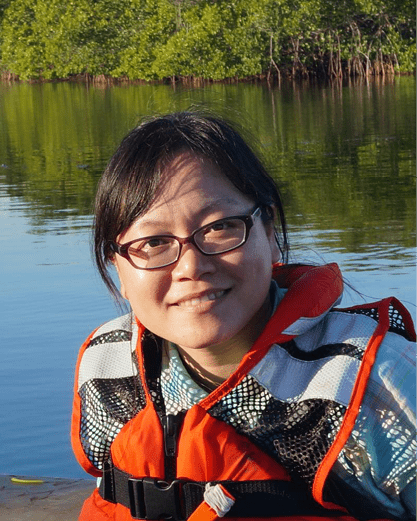Mangrove is a typical natural landscape with great ecological, social and economic functions and values, and should be highly valued and protected. However, in the past few decades, mangrove resources have suffered serious damage. Chinese mangroves, as an important part of the global mangroves, are of great research value. In the present study, the status and challenges of Chinese mangrove resources in Guangxi were investigated. In terms of administrative region, mangroves in China mainly occur in three provinces, Guangdong (9,891ha), Guangxi (8,375ha), and Hainan (3,930.3ha), constituting an area of 22,196ha. Guangxi coast of Beibu Gulf (8,375ha), making up 35.72 % of China mangroves. Mangrove area in the three regions constitutes 78.66% of total mangrove coverage in China. In this study, the community types and spatial distribution of mangroves along Guangxi coast was studies based on multi-source high-resolution satellite imageries, using image processing, GIS, GPS technology and field investigations. As per results, there were 7 243.15 hm2 of mangroves in Guangxi in 2023. Totally, 2793 mangrove patches were found, with the average patch-area of 2.59 hm2. The total area and the number of patches of mangrove in Beihai city were 3263.66 hm2 and 905 respectively, accounting for 45.06% of mangroves in Guangxi. There were 2097.41 hm2 in Qinzhou city, which had 1259 patches and accounted for 28.96% of mangroves in Guangxi. Fangchenggang city had the smallest area of mangroves among the three coastal cities in Guangxi, with 1882.08 hm2 in area, 629 patches which accounting for 25.98% of mangroves in Guangxi. Twenty-one types of mangrove communities in Guangxi were identified, including Community Avicennia marina, Community Avicennia marina+Aegiceras corniculatum, Community Aegiceras corniculatum, Community Aegiceras corniculatum+Avicennia marina, and Community Bruguiera gymnoihiza –Avicennia marina, etc. and were among the most dominant mangrove communities. At the same time Guangxi mangrove resource faces serval challenges, for instance, the development of Beibu Gulf Economic Zone threatens the mangrove ecosystems. Seawall construction, shrimp pond enclosures, and mangrove cutting degrade mangrove habitats, leading to mangrove damage and death. Identifying suitable mangrove restoration sites and determining suitable habitat conditions are key factors that affect the success of mangrove restoration.
















